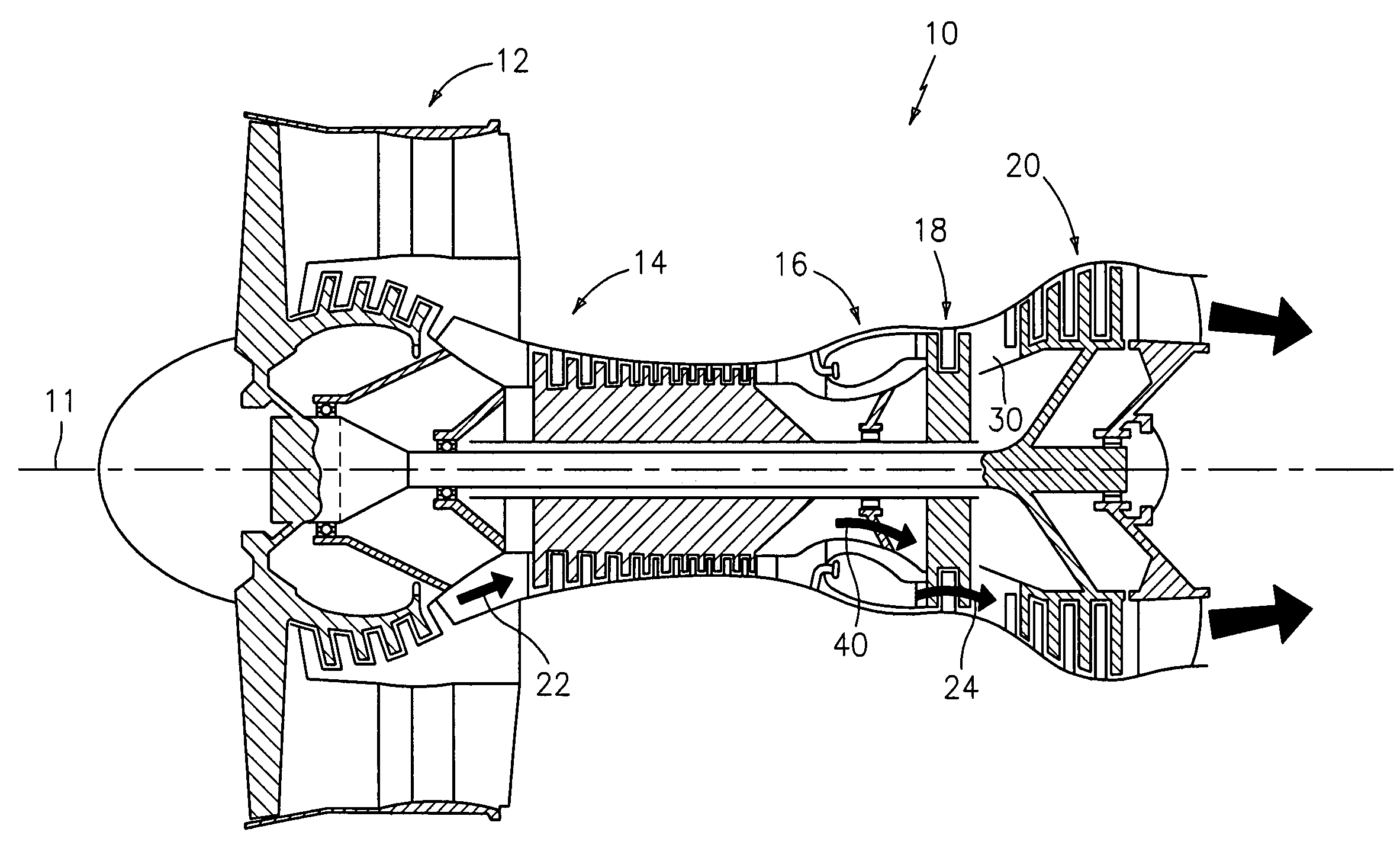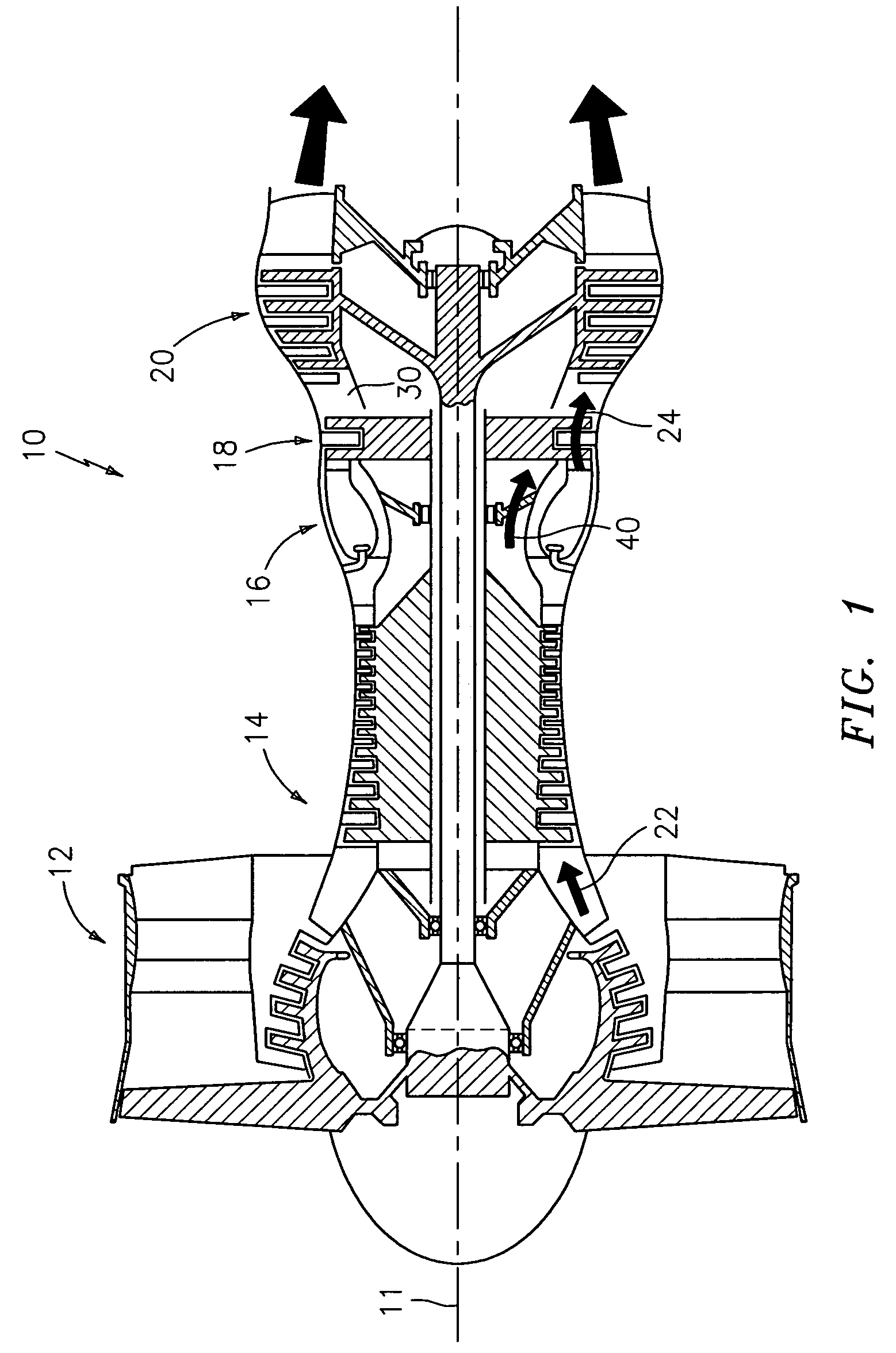Turbine cooling air sealing
a technology for cooling air sealing and turbines, applied in waterborne vessels, machines/engines, blade accessories, etc., can solve the problems of reducing the overall turbine efficiency, reducing engine efficiency, and particularly challenging inner cavity areas
- Summary
- Abstract
- Description
- Claims
- Application Information
AI Technical Summary
Benefits of technology
Problems solved by technology
Method used
Image
Examples
Embodiment Construction
[0027]The major sections of a typical gas turbine engine 10 of FIG. 1 include in series, from front to rear and disposed about a central longitudinal axis 11, a low-pressure compressor 12, a high-pressure compressor 14, a combustor 16, a high-pressure turbine module 18 and a low-pressure turbine module 20. A working fluid 22 is directed generally downstream / rearward through the compressors 12, 14 and into the combustor 16, where fuel is injected and the mixture is burned. Hot combustion gases 24 exit the combustor 16 and expand within a core flowpath in an annular duct 30 through the turbines 18, 20 and exit the engine 10 as a propulsive thrust. A portion of the working fluid 22 exiting the high-pressure compressor 14, bypasses the combustor 16 and is directed to the high-pressure turbine module 18 for use as cooling air 40.
[0028]FIG. 2 shows further details of the interface between the downstream end of the combustor 16 and the upstream end of the high pressure turbine module 18. W...
PUM
 Login to View More
Login to View More Abstract
Description
Claims
Application Information
 Login to View More
Login to View More - R&D
- Intellectual Property
- Life Sciences
- Materials
- Tech Scout
- Unparalleled Data Quality
- Higher Quality Content
- 60% Fewer Hallucinations
Browse by: Latest US Patents, China's latest patents, Technical Efficacy Thesaurus, Application Domain, Technology Topic, Popular Technical Reports.
© 2025 PatSnap. All rights reserved.Legal|Privacy policy|Modern Slavery Act Transparency Statement|Sitemap|About US| Contact US: help@patsnap.com



